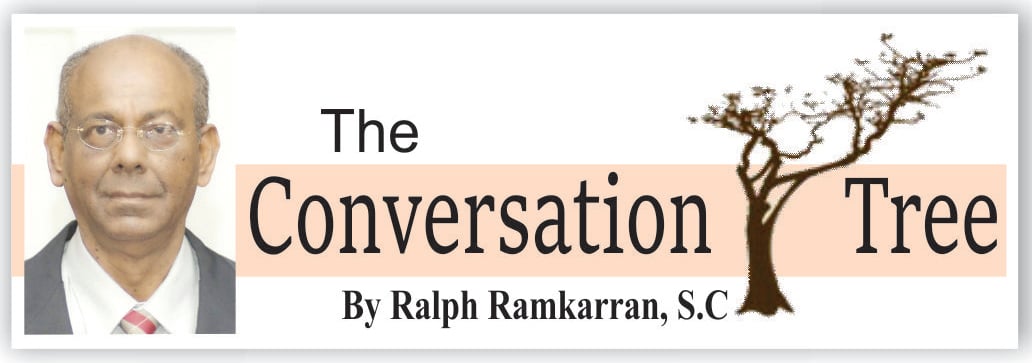A review of third parties, their roles and future, were discussed in SN’s editorial yesterday against the background of VP Jagdeo’s announcement that the PPP was ready for the challenge. A New and United Guyana (ANUG) was established in January, 2019. At the time of its establishment, it was fully aware of the history of third parties in Guyana, particularly The United Force (TUF) and the Alliance For Change (AFC), both of which had joined with the PNC/APNU to form a government, the TUF in 1964 and the AFC in 2015. It appears that Mr. Khemraj Ramjattan, leader of the AFC, was aware of the danger to the AFC’s existence of coalescing with the APNU because, prior to 2015, he expressed fears that, if it did, it would become “dead meat,” presumably acknowledging the history of the TUF. The AFC, up to the last elections, did not quite become “dead meat” but its death rattle was being heard. It is not known whether the terminal fortunes of the TUF and the AFC will influence the future of third party politics.
In the discussions leading up to the formation of ANUG it was acknowledged that even though the three major third parties, TUF, WPA (Working People’s Alliance) and AFC, had garnered a credible amount of support, although the WPA did not do well electorally, they all eventually failed to make a permanent impact on Guyana’s most enduring political problem, the struggle for ethno-political dominance. To be fair, the two more successful parties, the TUF and the AFC, never embraced any notion of constitutional reform to change the governance structure to address this fundamental issue. Their declared objectives were to remove the PPP as the governing party. In each case, after the objective was achieved, the coalitions of convenience fell apart.
Like everyone else, the persons who were discussing the formation of ANUG, were aware of this history. The APNU+AFC coalition government was still in office but there were clear signs that the AFC was losing support, as Mr. Ramjattan had predicted. ANUG determined that its main political objective ought to be the achievement of a political solution to Guyana’s problem of ethno-political dominance. Different leaders had different approaches but the dominant feature that was promoted was of a system whereby a government comprising the main political parties would be created after an election. ANUG believed that if it won three or four seats it would deprive either of the major parties of an absolute majority and would be able to influence Guyana’s political direction. In order to exercise an independent influence and judgement and, having regard to the demise of parties that joined either of the main parties, ANUG declared that it would not join in a coalition with either party or accept office in any government.
Unfortunately, the election results did not accord with ANUG’s expectations or that of any other third party. Since 1992 the PNC and its successor, APNU, gained between 40 and 42 percent of the vote. In 1964, the last free and fair elections before 1992, the PNC gained 40 percent. The AFC was expected to fall to 2 or 3 percent of the vote. However, the APNU+AFC alliance obtained 47 percent of the vote. Assuming that the APNU got its highest number, 42 percent, the AFC would have taken 5 percent. This surprisingly good performance of the APNU+AFC alliance and, in particular, that of the AFC, left insufficient votes for third parties to harvest. ANUG, the only third party still active, apart from the AFC, may or may not be in a position to contest the next elections. But if it does, the outcome would be uncertain.
No one can predict for how long the distribution of votes and seats will remain substantially similar to what it is today. There are predictions as there have been before every election, but there have been no material changes. In 2015 the APNU+AFC won by one seat. In 2020 the PPP/C won by one seat. Maybe those who are considering the impact of oil on the outcome of the elections, including the demise of APNU, may wish to consider that the PNC obtained
42 percent of the vote in the 1992 elections after the history of the previous twenty-five years. Guyana has long been in the grip of the drive for ethno-political dominance, and nothing has occurred to suggest that it is about to change anytime soon unless, by some miracle, the constitution reform process throws up something unexpected.
A potential miracle must be considered against the unlikelihood of either of the main parties conceding any loss of power in any kind of arrangement. APNU had the golden opportunity of enabling a constitutional order in 2015 to share power after 2020, having proposed in its manifesto a detailed power sharing arrangement, the inclusion of which, I am told, the WPA had engineered. Apparently, when the realization dawned on APNU that it may in future have to play a secondary role in a PPP-led government, it abandoned the promise. Talk of a political solution no longer exists in Guyana. Instead, the vacuum is being filled by heightened, negative, discourses about race and racial discrimination.
(This column is reproduced with permission from Ralph Ramkarran’s blog, www.conversationstree.gy)









